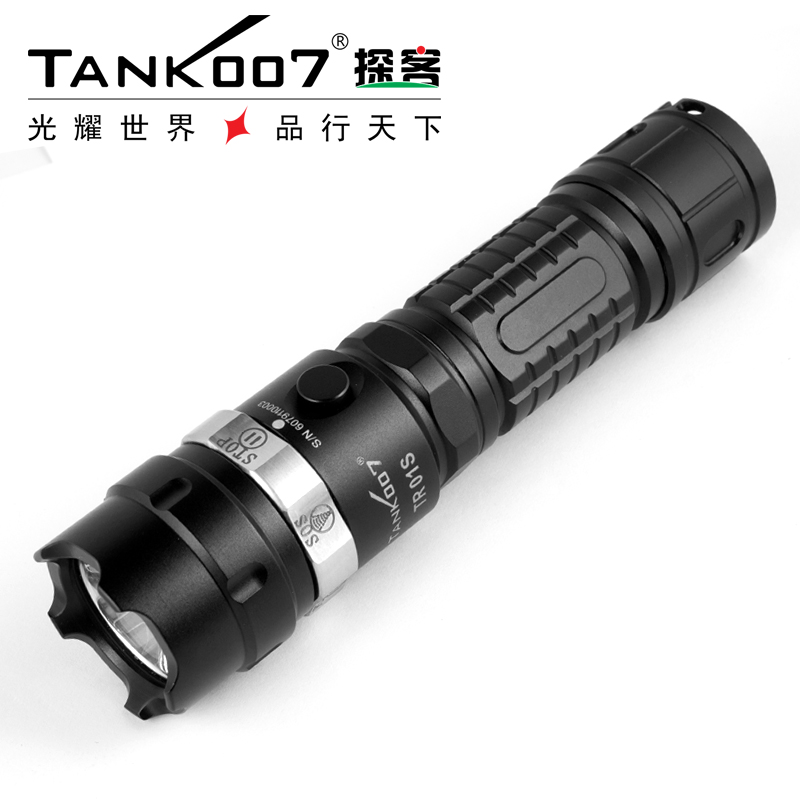With the introduction of LED flashlights into the market, the design of rechargeable LED flashlight housing has also received attention. To make a good flashlight product, we must first understand the use of the required design products, use environment, housing type, light efficiency, modeling, cost and so on.
The flashlight casing is also a very important part of choosing a flashlight. According to the material of the flashlight casing, the flashlight can be divided into a flashlight of a plastic casing and a flashlight of a metal casing, and the flashlight of the metal casing is further divided into aluminum, copper, titanium, stainless steel and the like. Next, let’s talk about the difference between a flashlight in a plastic case and a flashlight in a metal case.
Advantages of plastic: light weight, can be manufactured by mold, low manufacturing cost, easy surface treatment or no surface treatment, and the shell has excellent corrosion resistance, which is very suitable for diving and other applications.
Disadvantages: The heat dissipation is very poor, and it is almost impossible to dissipate heat well. It is not suitable for high-power flashlights.
Metal advantages: high strength, good heat dissipation, and can withstand higher temperatures without deformation, CNC can be used to create complex structures.
Disadvantages: high material and processing costs, heavy weight, generally require surface treatment.
Metal materials commonly used in flashlights are simple to introduce aluminum: the most commonly used materials for flashlight manufacturing, light weight, relatively easy to process, and good wear resistance and color after surface anodizing.
Copper: It is used to manufacture laser flashlights or limited edition flashlights. It is heavy, has excellent heat dissipation performance, and is difficult to obtain. It is difficult to obtain high hardness. It is mainly electroplated, painted or painted.

Titanium: Aerospace metal, which can reach the strength of steel at a density close to aluminum, has a high degree of bio-affinity, is highly resistant to corrosion, is extremely difficult to process, is expensive, has poor heat dissipation properties, and is difficult to chemically surface. However, after nitriding chemical treatment, the surface can form a very hard TiN film, the hardness of HRC can even reach 80, and the hardness inside titanium is higher than that of aluminum, so compared with aluminum after surface anodizing, the whole The durability will be greatly improved, and it can hardly be worn in actual use. Of course, this treatment is common on drill bits and the processing cost is extremely high. In addition to the nitriding treatment, it can also be used for other surface treatments to change its thermal conductivity and other shortcomings.
TANK007 rechargeable led flashlight appearance material is made of aerospace grade aluminum T6061, light and portable, good heat dissipation performance, all key components are independently designed and processed to ensure stable quality and cost, the whole series of products are passed CE, ROHS and other authoritative quality certifications, flashlight performance parameters are higher than national military standards, with high market position and good reputation and customer praise.
Stainless steel: Stainless steel is of concern to many people because it does not require surface treatment, is relatively easy to process, and has good retention. However, stainless steel also has its own disadvantages: the density is large, the weight is large, and the heat dissipation is poor, resulting in poor heat dissipation. Surface treatment generally can be done without chemical treatment, mainly physical treatment, such as drawing, matte, mirror and sandblasting.
The TNAK007 ES12 housing is machined from 304# stainless steel. The more common housing is manufactured using aluminum alloy and then anodized. After the anodizing treatment, it can reach a very high hardness but only a very thin surface layer, which is not resistant to bumping, and is relatively wear-resistant for daily use.
Several treatment methods for aluminum alloy materials
A. Ordinary oxidation: It is more common in the market. The flashlights sold almost online are ordinary oxidation. This kind of treatment can cope with the general use environment, but after a long time, the outer casing will show rust and yellowing.
B. Hard Oxidation: That is, adding a layer of treatment to ordinary oxidation, the performance is better than ordinary oxidation.
C. Three-stage hard oxygen: Its full name is three-stage hard oxidation, which is what the small explorer wants to introduce today. The third-class hard is also called Military Regulation III (HA3), and its performance mainly makes it protect the metal from abrasion. The flashlight of TANK007 aluminum alloy material is treated by three-stage hard oxygen treatment. After three levels of hard oxidation protection, it is harder to scrape off the paint when you take a knife or scrape or grind than other coatings.
UV Torch | UV Light Flashlight | Police Flashlight | UV Flashlight Black Light | LED Flashlight Wholesale | UV Flashlight
Copyright 2002-2022 Shenzhen Grandoor Electronics Co., Ltd. (Tank007)粤ICP备10078715号